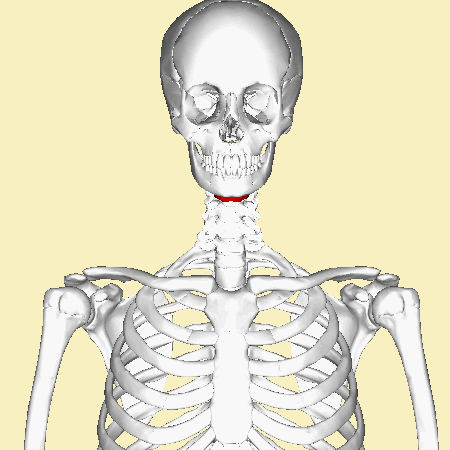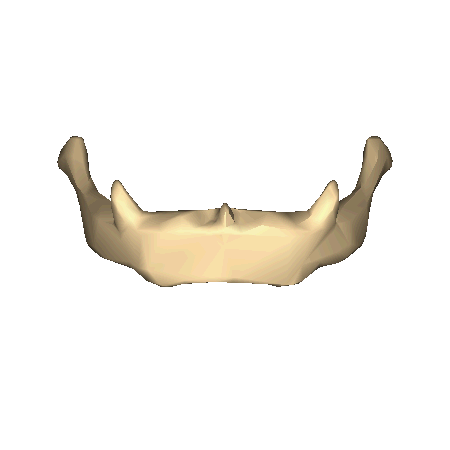8.3: Hyoid Bone
- Page ID
- 53621
Hyoid Bone

Above: The upper skeleton with the hyoid bone highlighted in red. The hyoid is the only bone that does not articulate with any other bone of the skeleton.
The hyoid bone is located between the base of the mandible and the 3rd cervical vertebra. It is an attachment point for many muscles responsible for tongue movement and swallowing. The hyoid bone in the neck is the only bone in the body that does not articulate directly with at least one other bone. It is U-shaped and is held in place by, and helps anchor, muscles that connect to the floor of the mouth and the tongue. It helps provide greater movement of the tongue and larynx, and so is crucial to human speech. In about 50% of strangulations, the hyoid bone is fractured.


Above: Hyoid bone with an anterior view (top left) and an anterolateral view (top right).
Attributions
- "Anatomy 204L: Laboratory Manual (Second Edition)" by Ethan Snow, University of North Dakota is licensed under CC BY-NC 4.0
- "BIOL 250 Human Anatomy Lab Manual SU 19" by Yancy Aquino, Skyline College is licensed under CC BY-NC-SA 4.0
- "BodyParts3D/Anatomography" by The Database Center for Life Science is licensed under CC BY-SA 2.1
- "Hyoid bone - animation.gif" by Anatomography is licensed under CC BY-SA 2.1
- "Hyoid bone - close-up - animation.gif" by Anatomography is licensed under CC BY-SA 2.1


